The Ghadar Party was a revolutionary organization centered on the weekly newspaper “The Ghadr,” which had branches in the Far East and along the US coast in addition to its San Francisco headquarters. Before the formation of the Ghadar Party, earlier revolutionary activities were carried out by individuals such as Ramdas Puri, G.D. Kumar, Taraknath Das, Sohan Singh Bhakna, and Lala Hardayal, who arrived in the United States in 1911. These earlier activists had established the ‘Swadesh Sevak Home’ in Vancouver and the ‘United India House’ in Seattle to facilitate their revolutionary activities. Finally, in 1913, the Ghadar Party was officially founded.
Emergence of the Ghadar party
Seeking Leadership: The Indian community on the West Coast of the United States had been searching for a leader, even considering inviting Ajit Singh, who had gained fame through his activism in Punjab in 1907.
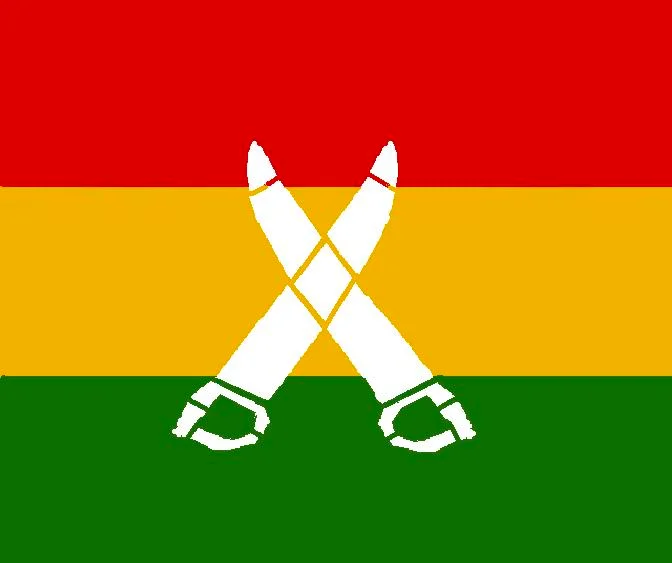
- Emergence of a Leader: However, Lala Har Dayal was already present in the region, and after December 1912, he expressed his willingness to actively engage in political activities. Consequently, the Hindi Association was established in Portland in May 1913.
Plan of Action of Ghadar Party
During the very first meeting of the Association, held at Kanshi Rain’s house and attended by individuals like Bhai Parmanand, Sohan Singh Bhakna, and Harnam Singh ‘Tundilat,’ Har Dayal outlined his plan of action.
- Leveraging American Freedom for Indian Liberation: He emphasized not fighting against the Americans but utilizing the freedom available in the United States to combat British colonial rule in India.
- Limitation of Equality: Har Dayal asserted that Indians would never be treated as equals by the Americans until they achieved freedom in their own land.
- Rooting Out British Oppression: He believed that the root cause of Indian poverty and degradation was British rule and that it needed to be overthrown, not through petitions but by armed revolt.
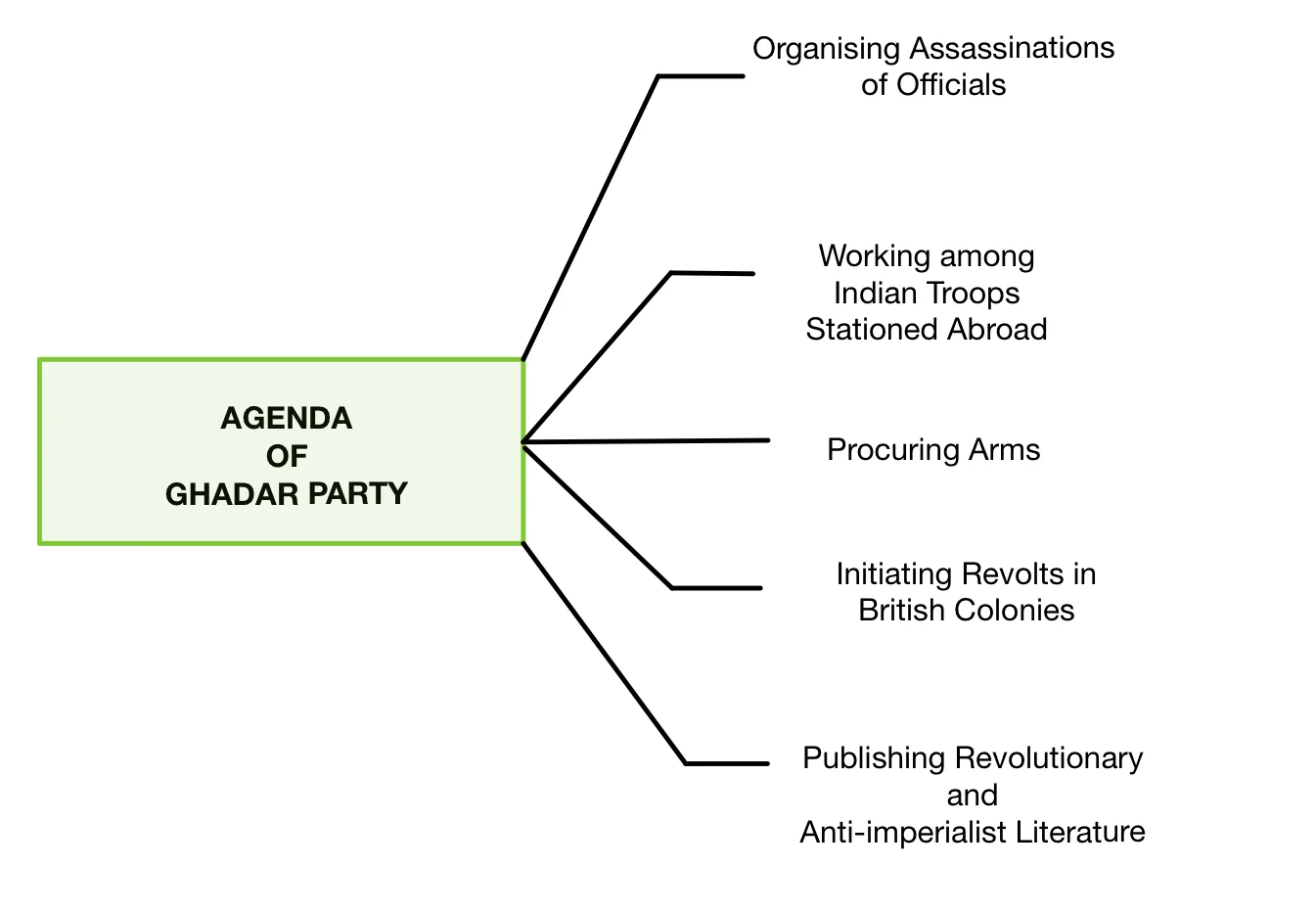
Har Dayal encouraged taking this message to the masses and Indian soldiers, suggesting that many Indians should return to India to enlist their support. Har Dayal’s ideas gained immediate acceptance among the Indian community.
- A Working Committee was established, and a decision was made to launch a weekly newspaper called “The Ghadar” for widespread circulation.
- A headquarters named Yugantar Ashram was established in San Francisco.
- A series of meetings were conducted in various towns and centers, culminating in a representative gathering in Astoria, where the decisions made during the initial meeting in Portland were confirmed and approved.
This marked the beginning of the Ghadar Movement. The party had branches not only along the US coast but also in the Far East. The members of this revolutionary movement primarily consisted of former soldiers and peasants who had migrated from the Punjab to the USA and Canada in search of better job opportunities. They were mainly based in cities along the western (Pacific) coast of the United States and Canada.
Prominent Personalities Engaged in Ghadar Party
The Ghadar militants wasted no time and embarked on an extensive propaganda campaign. They travelled extensively, visiting mills and farms where a significant portion of Punjabi immigrant labourers worked.
- Key figures driving the Ghadar Party were Rash Behari Bose, Lala Hardayal, Ramchandra, Bhagwan Singh, Kartar Singh Saraba, Barkatullah, and Bhai Parmanand.
- The Yugantar Ashram served as the home, headquarters, and refuge for these political activists.
Revolution through Literary Contribution
Origins and Purpose of the “Ghadar” Newspaper: On November 1, 1913, the first issue of Ghadar was published in Urdu, followed by the Gurumukhi edition on December 9. The newspaper’s name left no room for ambiguity about its purpose, as “Ghadar” translates to “Revolt.”
- If any doubts remained, they were dispelled by the bold captions on the newspaper’s masthead, such as “Angrezi Raj ka Dushman,” meaning “An Enemy of British Rule.”
- Critical Expose on British Colonial Rule: Each issue’s front page featured a section titled “Angrezi Raj Ka Kacha Chitha,” or “An Expose of British Rule.” This section consisted of fourteen points outlining the adverse effects of British colonial rule.
- Call for Revolutionary Action: In essence, Ghadar summarised and presented every week to its readers the complete critique of British rule that had been formulated by the Indian national movement. The last two points of the Chittha suggested a solution:
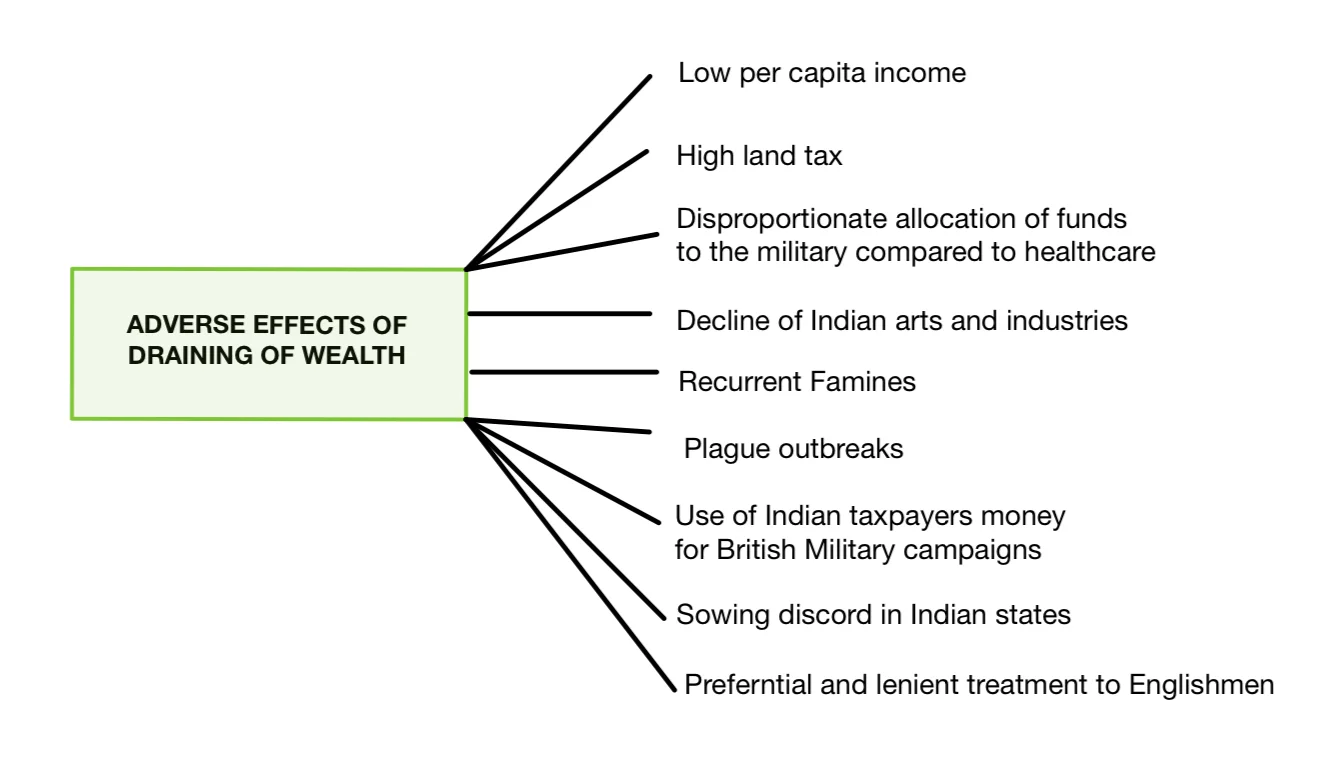
- The Indian population numbers seven crores in the Indian States and 24 crores in British India, while there are only 79,614 officers and soldiers and 38,948 volunteers who are Englishmen.
- Fifty-six years have passed since the Revolt of 1857; now, there is an urgent need for a second one.
- Utilizing Literary Tools for Propaganda: In addition to the straightforward message conveyed by the Chittha, the Ghadar movement also used various mediums to propagate its cause.
- One of the powerful tools was the serialization of Vinayak Damodar Savarkar’s book, “The First War of Indian Independence — 1857,” in the pages of Ghadar.
- This serialized content aimed to inform and inspire readers about the history of Indian resistance against British rule.
- Revolutionary Figures and Groups: The Ghadar newspaper also featured references to the contributions of prominent figures in the Indian independence movement, including Lokamanya Tilak, Sri Aurobindo, V.D. Savarkar, Madame Cama, Shyamji Krishna Varma, Ajit Singh, and Sufi Amba Prasad.
- It highlighted the daring actions of groups such as the Anushilan Samiti, the Yugantar group, and Russian secret societies, showcasing the broader context of revolutionary activities worldwide.
- Global Reach and Influence: The Ghadar newspaper achieved an extraordinary level of circulation and influence among Indians not only in North America but also around the world.
- Within just a few months of its publication, it had reached Indian immigrant communities in various regions, including the Philippines, Hong Kong, China, the Malay States, Singapore, Trinidad, Honduras, and, of course, India itself.
- This wide dissemination of the newspaper sparked lively discussions and debates among readers, and the revolutionary poems it contained became particularly popular.
- Cultural Transformation Among Punjabis: The poems published in The Ghadar were recited at gatherings of Punjabi immigrants, and their influence quickly spread. The impact of the newspaper was remarkable in that it transformed the self-image of Punjabi immigrants.
- It shifted their identity from that of loyal subjects of the British Raj to rebels dedicated to dismantling British rule in their homeland.
- The Ghadar consciously reminded Punjabis of their loyalist past, encouraged them to feel ashamed of it, and challenged them to atone for it by embracing their historical tradition of resisting oppression.
- Urgency and Revolutionary Zeal: The impact was profound, and young militants inspired by The Ghadar’s messages began to thirst for immediate action.
- Har Dayal, the founder of the Ghadar movement, was surprised by the intensity of the response.
- He had occasionally spoken in terms of “ten years” or “some years” when asked how long it would take to organize a revolution in India.
However, the impatience of those who had read The Ghadar was evident, and they deemed ten years to be too long a wait. This demonstrated the radical stance and mission of Ghadar in its mission for Indian independence. The Ghadrites aimed to bring about a rebellion in India, and their plans gained momentum due to two significant events in 1914: the Komagata Maru incident and the outbreak of the First World War.
Komagata Maru Incident and the Ghadar
The journey of the ship, Komagata Maru in March 1914 had significant political implications. Canada had imposed stringent restrictions on Indian immigration through a law that prohibited entry except for those who had made a continuous journey from India.
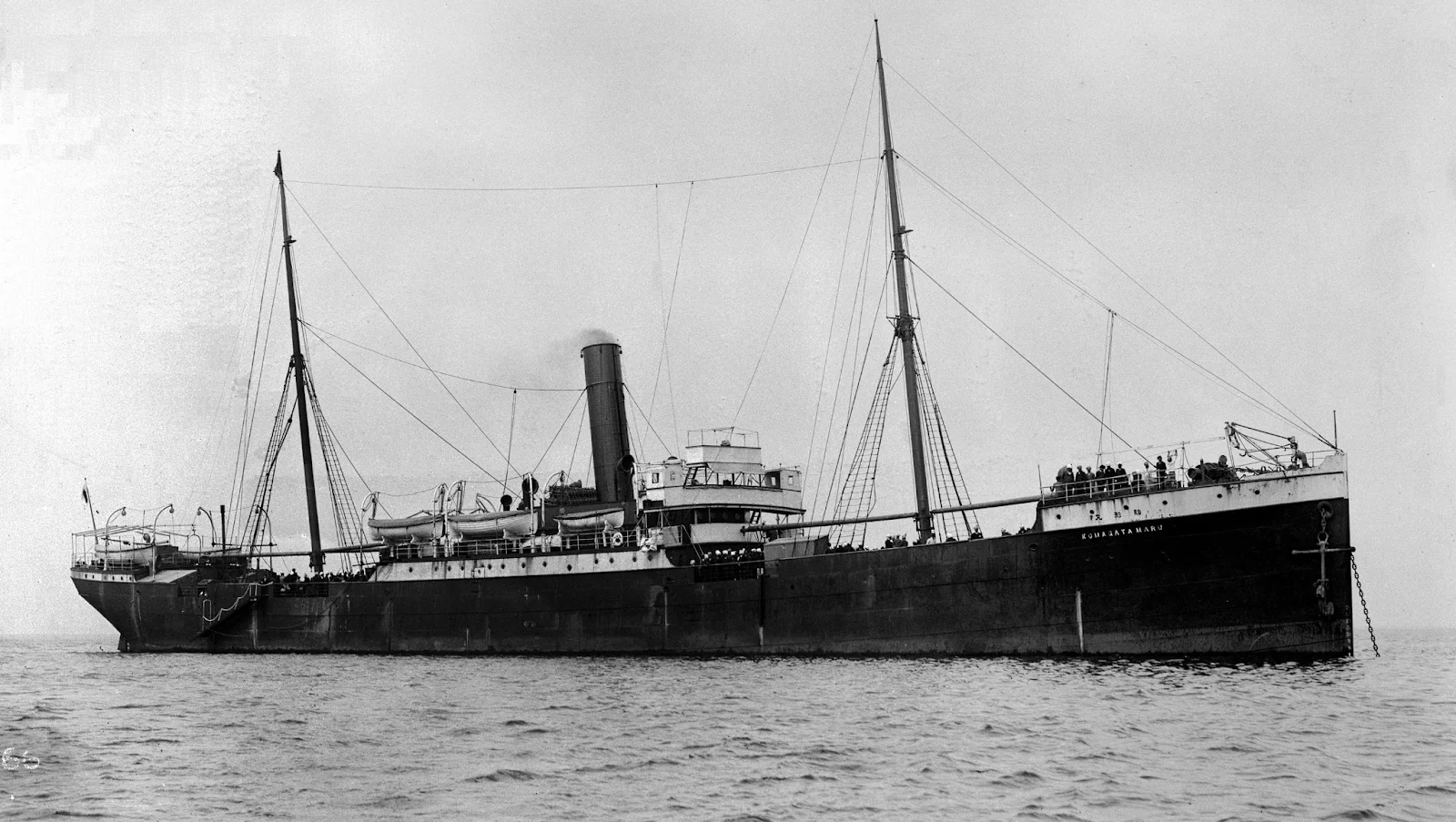
- Canadian Supreme Court Ruling: While this had effectively curtailed Indian immigration due to the lack of shipping routes following this path, a Canadian Supreme Court ruling in November 1913 allowed the entry of thirty-five Indians who had not made a continuous journey.
- Gurdit Singh’s Initiative: Encouraged by this judgment, Gurdit Singh, an Indian contractor based in Singapore, chartered the ship Komagata Maru to transport 376 Indian passengers from various places in East and Southeast Asia to Vancouver, Canada.
- Ghadar activists visited the ship at Yokohama, Japan, delivering lectures and distributing literature.
- Media Reactions: The press in Punjab warned of potential consequences if the Indians were not allowed entry into Canada, but Canadian newspapers, particularly in Vancouver, depicted the situation as a “Mounting Oriental Invasion.”
- Arrival and Denial: Upon the ship’s arrival in Vancouver, it was denied entry and was surrounded by the police. To fight for the rights of the passengers, a “Shore Committee” was established, led by Husain Rahim, Sohan Lal Pathak, and Balwant Singh.
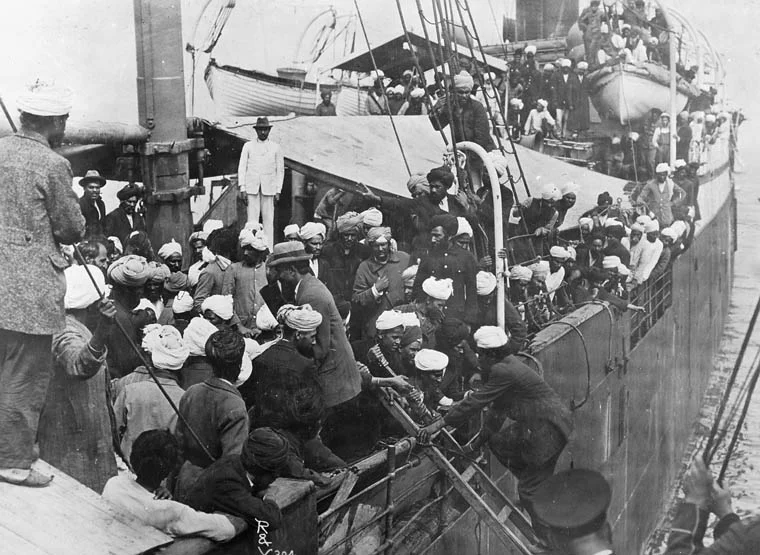
- Funds were raised, and protest meetings were organized. There were threats of rebellion against the British in India if the passengers’ rights were not upheld.
- Simultaneously, in the United States, under the leadership of figures like Bhagwan Singh, Barkatullah, Ram Chandra, and Sohan Singh Bhakna, a powerful campaign was launched. People were advised to prepare for rebellion.
- Mobilization and Protest: Eventually, the Komagata Maru was forced out of Canadian waters.
- As it travelled, World War I broke out, and the British government issued orders that prevented passengers from disembarking anywhere along the way, except at Calcutta.
- U.S. Leadership: At each port, the ship’s presence triggered resentment and anger within the Indian community, leading to anti-British mobilization.
- Upon arriving at Budge Budge near Calcutta, confrontations between the passengers and the authorities escalated due to the hostile attitude of the officials.
-
- This culminated in a clash in which eighteen passengers were killed, and 202 were arrested. Some passengers managed to escape the authorities.
| Must Read | |
| Current Affairs | Editorial Analysis |
| Upsc Notes | Upsc Blogs |
| NCERT Notes | Free Main Answer Writing |
Conclusion
The Ghadar Party emerged as a crucial force in the Indian independence movement, igniting revolutionary fervor among the Indian diaspora, particularly in North America. Through its widespread influence, embodied in the “Ghadar” newspaper, the party galvanized a global network of Indian patriots. The Komagata Maru incident further fueled anti-British sentiments, intensifying the movement’s resolve. Ultimately, the Ghadar Party’s legacy is one of unyielding determination to overthrow colonial rule and reclaim India’s sovereignty.
Sign up for the PWOnlyIAS Online Course by Physics Wallah and start your journey to IAS success today!
| Related Articles | |
| Green Revolution in India | Economic Impact Of British Rule In India |
| The Revolt of 1857 | Ghadar Party |

 GS Foundation
GS Foundation Optional Course
Optional Course Combo Courses
Combo Courses Degree Program
Degree Program











